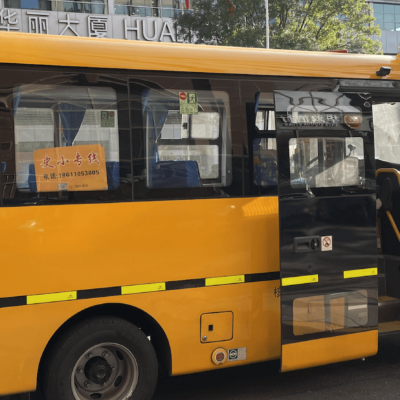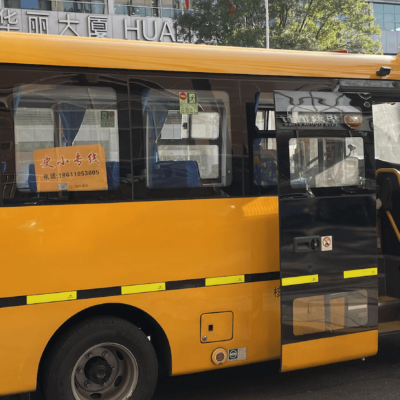The incorporation of Asian languages and literatures within the emerging field of queer translation is needed to develop discussion and understanding of queerness in relation to sex, gender, sexuality, race, geography, and culture, and perhaps even Western cultural imperialism.
The value of studying translation—both practice and theory— through the lens of queer theory has been firmly situated within the confines of the West. Most scholars who work on queer/queering translation focus on Indo-European languages and Euro- and US-centric contexts. For example, translation studies scholar Brian James Baer’s foundational work Queer Theory and Translation Studies: Language, Politics, Desire, despite the unspecified use of ‘language’ and ‘desire’ in the subtitle, focuses on Indo-European languages and cultures with which Baer is familiar.
However, Baer mentions Navaz Nicholson’s Japanese translation of queer studies scholar and writer Annamarie Jagose’s novel In Translation (which follows the protagonist Helena’s relationship with her lover who is a renowned Japanese translator) and the Chinese story ‘The Cut Sleeve’, which was used as a poetic and favourable euphemism for intimacy between men.
Although Asia has culturally, historically, racially, and individually diverse genres and cultures as represented in literatures—which underscore the enormous importance of Asian languages and cultures—queer literatures from Asia in particular have been largely ignored by scholars of queer studies and translation studies even though Western public readers have for years been interested in queer Asian writing, mostly through translation. For example, in 1984 Gay Sunshine Press and Lyeland Publications, one of the most important publishers in ‘gay publishing’, began to publish gay erotica and popular culture, including a significant contribution to publishing translations of ‘gay’ literature from other cultures, such as Partings at Dawn: An Anthology of Japanese Gay Literature (1996) which features a story by Yukio Mishima and Taiwan author Pai Hsien-yung (白先勇)’s Niezi (translated into English as Crystal Boys by Howard Goldblatt, 1990). Largely due to its English translation, Crystal Boys, as translation studies scholar Wangtaolue Guo notes, became a sensation among English-speaking American readers and it was later marketed as ‘the first modern Asian gay novel’ on the 1996 paperback edition, thus attracted ‘a large number of queer readers who were curious about cultural uniqueness and universal experience of being gay’.
In the case of queer literature translated from Chinese, as Western readers ‘welcomed Chinese representations of non-heteronormative sexualities’, which was ‘motivated by a sympathy for queer expressions elsewhere’, such texts, as comparative literature scholar Andrea Bachner observes, were at the same time ‘frequently celebrated as examples of resistance against non-Western and hence supposedly more oppressive contexts.’ Three decades later after the publication of Crystal Boys in English translation, in 2022, the Taiwan-born bilingual author Li Kotomi (李琴峰)’s Hitorimai (which she translated from Japanese into Chinese) came out as Solo Dance in English translated by Arthur Reiji Morris. The publisher World Editions promotes Solo Dance on the back cover as ‘an important queer voice from East Asia’s millennial generation’.
In the making of global circulation of queerness on the Anglophone market, the reality is that translation has played a key role in understanding the often-hidden workings of cultural and linguistic hegemony. Therefore, there is a considerable gap between queer translation and Asian languages, including Chinese, Japanese, Korean, Indonesian and Indian languages and genres, especially around translation of non-normative genders, sexualities, and desires.
I will demonstrate the importance of Asian languages and contexts in the evolution of translation studies, which offers implications of new perspectives in the study of queer/queering translation. On a macro level, including Asian languages would strengthen the elaboration of key questions that queer translation studies scholars have sought to address, such as what queer theory can do for translation studies; and in what ways translation can be incorporated into a queer counterhegemonic pedagogy. On a micro level, bringing Asian languages, cultures, and contexts into future scholarship on translation reaches far beyond the task of bringing visibility to Asian queer authors and texts that include diversity of LGBTQI+ persons, narratives, and themes but also adds a density of texture that allows readers to rethink dominant concepts of gender, sexuality, and desire.
What has the field of queer translation studies missed?
Asia is a highly diverse region and China, Japan, and Korea are some of the oldest continuous civilisations in the world thanks to their rich traditions in literature, arts, philosophy, language, and creativity. It is not quite clear why Asian languages, cultures, and contexts, have been somewhat ignored and left critically unexamined in the field of queer translation. Within a larger historical context, this may be an effect of the self-referential logics of queer US-centrism and Eurocentrism, especially as a Western sexual epistemology is adopted and contested in non-Western contexts. Such bias has left clear traces in the creation or even invention of new gender and sexual identities and cultural and social phenomena and exchange.
Far less attention has been paid, moreover, to the diversity and inclusivity in translating across cultural understandings of race, ethnicity, and sexuality. My call here is to embrace the diversity and inclusivity of other languages in all respects as an act of queer resistance to the Western regulation of sexual identity, knowledge, and sexuality. The danger of ignoring Asian languages is that it invalidates certain forms thus allowing important aspects of sociocultural diversity to go unexamined in queer translation and in translation studies at large.
Given the West has been profoundly affected by its constantly mutually defining relationship with Asia across time, US and Eurocentric queer translation studies has missed its opportunity to deepen our understanding of the nature of queerness in the context of Asia, which is grounded in the lived experiences of sexual and gender minorities in Asian societies. In this context, the nature of queerness is heterogenous and multiple, and its forms of gender, sexuality, intimacy are/could be deviant, abnormal. There are a wide range of social realities influencing the nature of queerness including LGBTQI+ history, identity politics, activism, homophobia, and the resilience that is required to survive. Literatures from Asia can provide non-identifying LGBTQI+ readers insights into cultures and experiences that they might barely understand in the context of Asia where stigma and discrimination against the LGBTQI+ communities remain and sexual orientation and gender identity is not conceptualised in the same way as Western cultures.
One example of this is Li Kotomi (り ことみ, Li Qinfeng, 李琴峰)’s Hitorimai, which has been translated by herself from Japanese into Chinese as 獨舞 (Du Wu) and translated into English as Solo Dance. The novel depicts Chō Norie’s painful coming of age of a Taiwan-born queer woman living in Japan. In addition to her sexuality, fascination with death, and search for hope after trauma, the Japanese language and language education, as Japanese studies scholar Claire Maree notes, ‘play pivotal roles’ in the story. It gives insights into ‘experiences of those who identify and/or are classified as sexual minorities in a time of increased awareness of sexual orientation and gender identity (SOGI) issues on a global scale’.
Critical attention to the English translation Solo Dance can offer a more nuanced picture of how queerness in relation to gender, sexuality, and intimacy is rendered to a ‘prestige’ language such as English. Among other issues and challenges in the English translation of Hitorimai, Arthur Reiji Morris has admitted that it was ‘a challenge’ to translate ‘she’ throughout the novel that combines first-person and third-person narratives while ‘she’ has multiple names and faces. In Chapter 6 of its Japanese and Chinese editions of Solo Dance, Li Kotomi teases her queer readers by using numerous singular female pronouns ‘她’ and ‘彼女’ in Chinese and Japanese. The English translation reveals that ‘she’ (the narrator) and a woman named Xiao Xue (meaning ‘Little Snow’ in English’) who engages a dialogue to trace back to the times of lazi are translated into English simply as ‘they’, which can be used as a third-person gender-neutral (epicene) singular pronoun. Queer readers of the Taiwan-born queer author Qiu Miaojin’s Chinese texts and their English translations at large would know that lazi is a term created by Qiu Miaojin to refer to lesbian women in her novel Notes of a Crocodile which was a great influence on Li Kotomi. What the English translation has missed is the exposure of female same-sex intimacy, which serves as a reminder of the ethical dimension of the task of the translator, that is, to use the words of queer translation studies scholar Marc Démont, ‘linked to the reader to the systematic attempts to erase queer sexualities and in fine queer subjects’. With a lack of history of queer literature of Taiwan, the translator Morris translates‘同性への愛欲’ (meaning same-sex lust) in Hitorimai (which is self-translated by Li Kotomi into Chinese as ‘同性的愛慾’ , meaning desire for the same sex, in Du Wu [獨舞]) as ‘her sexuality’ to refer to Qiu Miaojin’s romantic, sexual, and emotional attraction to the same female gender.
In the practice of translation of queer literature like Hitorimai, it is critical to pay attention to ‘the voices of queer individuals in different times, places, and languages’, to use Brian Baer’s words, and the critical potential of creating ‘a transnational space of debate that crosses linguistics as well as racial, ethnic, gender, sexual, and religious boundaries’ as discussed by translation studies scholar Naoki Sakai in his prominent monograph Translation and Subjectivity: On ‘Japan’ and Cultural Nationalism.
Only if liberated from the straitjacket of linguistic and cultural hegemony and binaries (such as rigid equivalences between two languages) can we recreate an opportunity to allow for a local and global elaboration of queer identities and communities. This way, more alternative identities that have been re-semanticised, erased, domesticated or fully incorporated into a Western conception of queerness, such as the ‘gay’ identity, will come out of the closet of a closed set of meanings. Among others, warias who—as Benjamin Hegarty argues in The Made-Up State: Technology, Trans Femininity, and Citizenship in Indonesia—compose much of Indonesia’s trans feminine populations will be made manifest, in their existence and visibility, thus making linguistic and cultural asymmetries visible.
Why does queer translation need Asian languages and contexts?
Asian languages and contexts matter for queer translation studies because both queer translation and Asian languages share a complex process of cultural negotiation and (un)decidability. Attention to Asian languages and cultures offers compelling new insights into how queer/non-normative ideas, individuals, and identities are formed in different contexts outside the West through a process of cultural negotiation. Asian languages and contexts, like queer translation, work against essential, hierarchised distinctions and categories—potentially stimulating shifts in social identities and categories while opening up possibilities of transgression, incorporation and re-signification. In practice, paying attention to, for example, the very terms used for gender and sexual identities and the differences in transgression and slippages of signification, is what comparative literature scholar William Spurlin calls ‘a comparatively queer praxis.’ In the study of queer translation, paying attention to Asian languages and contexts is a way of comparatively queering the field of queer translation studies, otherwise the Indo-European languages-centred queer translation studies would reduce Asian cultures into something devoid of linguistic, cultural and contextual underpinnings.
‘Why does queer translation need Asian languages and contexts?’ is therefore a crucial question that connects queer Asian studies to the problematic of the universalising pretentions of the existing scholarship on queer translation. This question reinforces a divide rather than promoting empathic solidarities across linguistic and cultural borders in translation studies and queer studies as well. Some exceptional examples, however, can be understood as a resistance to such a divide, such as the publication of ‘Translation and LGBT+ queer activism’, a special issue of Translation and Interpreting Studies (2021) edited by translation studies scholars Michaela Baldo, Jonathan Evans, and Ting Guo, in which the editors seek to ‘develop queer theory away from its Anglo-American focus’ by addressing the translation of queer and LGBT+ texts in various locations, including China and Turkey. In this special issue, media studies scholar Hongwei Bao examines how Western queer theory was introduced to Chinese readers in mainland China via two competing translations in Chinese in the early 2000s: one by the prominent sociologist Li Yinhe as ku’er lilun in her book Queer Theory: Western Sexual Thought in 1990s (酷兒理論:西方90年代性思潮), and the other by scholar and translator Wang Fengzhen as guaiyi lilun in his book Guaiyi Lilun (Peculiar Theory, 怪異理論). Through para-textual and contextual analysis, Bao’s article pinpoints the cultural specificities of queer theory’s reception in the post-socialist Chinese context at the beginning of the new millennium. Focusing on the translation of queer theory in Chinese contexts has demonstrated that critical attention to local knowledges and queer voices shows that what is ‘queer’ is constantly expanding, changing, and being revised by the context.
Including other languages and cultures can help provide alternative knowledge about imagining the embodiment of non-normative sexuality and gender. Queer translation should draw attention to its own lack of linguistic, cultural, and contextual inclusivity. A rare example in the existing scholarship of queer translation is translation studies scholar Leo Tak-Hung Chan’s chapter ‘Transgenderism in Japanese manga as radical translation’ in Queering Translation, Translating the Queer: Theory, Practice, Activism. The only chapter in the edited volume that touches upon Japanese language and context, it investigates the representation of transgenderism in Japanese manga translations of the Chinese classic Journey to the West (xiyouji, 西遊記) by Wu Cheng’en. Chan’s chapter explores how the visual language of manga contributes to the queering of the main character, a monk who is graphically represented as a woman. Discussions like this can help deepen our understanding of alternative gender formations, such as gender-bending in the case of the manga, and mixed reception of imaginative adaptations and translations of canonical texts like Journey to the West.
Including Asian languages and contexts also helps bring visibility to queer authors and translators, and the translation of queer texts from Asia. Covering case studies from Asia—including the Middle East, South and East Asia, and Asian diasporas at large—can offer genuinely new perspectives into a continuing process of cross-cultural communication. In 2021, Queer Taiwanese Literature: A Reader, an anthology of queer stories spanning from 1975 to 2020 from Taiwan, was published by Cambria Press. As Su Shuo-bin, director of the National Museum of Taiwan Literature, in the foreword writes, the book ‘is a part of systematic and measured attempt to introduce Taiwan’s distinctiveness to the rest of the world’. Similarly, media studies scholar and translator Fran Martin’s translated anthology Angelwings: Contemporary Queer Fiction from Taiwan was published in 2003, which includes 10 queer texts of 1990s tongzhi literature for the first time in English translation. By highlighting the historical and social factors that led to the emergence of queer literature in Taiwan, these anthologies have enriched the existing scholarship of literary studies, culture studies, and gender studies. However, these rich resources have yet to be analysed or studied through the lens of queer/queering translation, which, in the words of Christian Bancroft, describes ‘more expansive ways of imagining the relationships among languages as they relate to the identities, cultures, and societies that produce them’.
Conclusion
I argue that the value of studying translation—both practice and theory—through the lens of queer has been firmly situated in the confines of the West and there is a considerable gap between queer translation and Asian languages, contexts, cultures, and genres, especially around translation of non-normative genders, sexualities, and desires. Failing to recognise the enormous value of inclusive perspectives, the study of queer has missed multiple opportunities to challenge the universalising claims of Western theories and practices. However, the recent acknowledgement of past exclusion of Asian languages and contexts indicates the emergence of alternative perspectives that no longer consider Asian languages and cultures as a potential threat to the common norms and conventions. The incorporation of Asian languages and contexts within the emerging field of queer translation can indeed serve as a model for the ongoing public discussion of queerness in relation to sex, gender, sexuality, race, geography, and culture, or perhaps even Western cultural imperialism. The study and practice of queer/queering translation is bound by the ways in which ‘becoming, change, fluidity, heterogeneity, difference, and queerness reveal themselves in translation’. Therefore, wherever possible, scholars in queer translation should make Asian languages and contexts visible so as to constantly renew different possibilities, thus strengthening the elaboration of key questions that queer translation studies scholars have sought to address, such as: what can queer theory do for translation studies; and in what ways can translation be incorporated into a queer counterhegemonic pedagogy?
Image credit: Robert Katzki on Unsplash




